
Addressing The Problem with Homework
Many educators are starting to recognize the problem with homework. And while homework is almost universal, there is little evidence that it actually works.
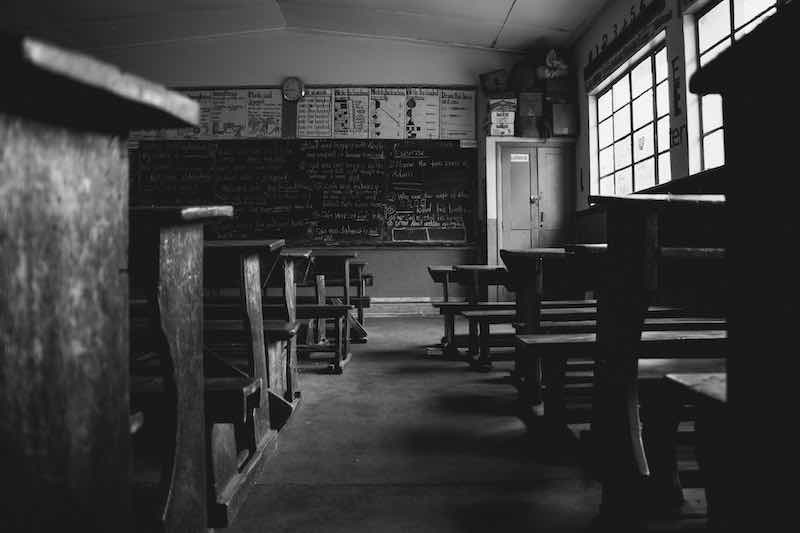
When you went to school, you probably spent most of your day sitting in rows. But does this arrangement create the best learning environments?
In today’s schools, it’s getting harder and harder to find classrooms with desks in rows. These days, students can be found sitting in pods, at rounds tables, and in even more flexible arrangements.
But does moving furniture cause better learning? It’s almost a silly question. But we often make assumptions about the quality of instruction, just by looking at seating arrangements.
I’ve walked through schools with desks in rows and teachers lecturing from the front. And I have to admit, I often assume the school is strict, old-fashioned, and teacher-centered.
I’ve also found myself in classrooms with bean bags, round tables, and sofas, daydreaming about how great it must be to learn in such a classroom. “In this room,” I tell myself, “children engage in student-centered, progressive, and collaborative learning.”
On my very first day as an instructional coach, I was assigned to help Ms. Ramirez. She taught middle school science in the South Bronx, and struggled with classroom management.
It was Ms. Ramirez’s second year in the classroom, and I could see that some of her students could be very challenging. But I also noticed that she spent most of her time at the front of the room, reading PowerPoint slides. She rarely asked her students questions or had them discuss what they were learning.
I decided that we should work on student-centered practices. More engaging lessons would certainly help her with classroom management.
We planned a three-part workshop lesson on ecosystems. We made cards describing different animals. Students would work in teams to decide what type of environment was ideal for each animal. They would explain their reasoning on graphic organizers, and share with the class at the end of the lesson.
But Ms. Ramirez couldn’t even get through the directions. As she tried to explain the activity, her students went right on with their conversations. As we handed out the materials, the students grabbed them from each other and began throwing them around the room.
After the lesson, I suggested we take a step back. “We’ve done what we could to make the learning engaging. But if the students won’t participate, you’ll need to establish some rules and structure. What if we try putting the desks in rows?”
“I can’t,” she replied, “School policy. Desks need to be in groups. It helps the students with collaboration.”
We both knew there wasn’t much collaboration happening in her room. At least not the kind we wanted to see.
Putting her desks in rows would have made it easier for Ms. Ramirez to get her class under control. And from there, we could have incorporated more collaborative learning.
I also wondered if this really was the school’s policy. Sometimes administrators say things that get taken out of context, or otherwise misinterpreted.
So I met with the principal to describe the situation. I asked if Ms. Ramirez could use rows temporarily. Just until we could get her class under control.
But it turned out Mr. Ramirez was right about the policy. And there were to be no exceptions. “Group seating makes learning more collaborative.”
And it was Ms. Ramirez’s job to figure out the rest.
I used to think that arranging desks in rows was the norm for most of the 1900s, but the history of classroom seating is actually more nuanced.
Public schools weren’t universal across the United States until the late 1800’s. In the days of the one-room schoolhouse, seating arrangements varied. But at the turn of the 20th Century, school enrollments exploded. The flood of new students led to a standardized approach to classroom seating.
But soon thereafter, education reformers began to suggest alternative seating arrangements. And by the Great Depression, collaborative seating was the norm in public schools.
For the last hundred years, the standard setup has changed with the tide of public opinion. One year, progressive and interactive classroom designs sweep the nation. A few years later, budget cuts, increased enrollment, and counter-reforms put the desks back into rows.
These trends highlight two interesting assumptions. The first is that seating arrangements need to be the same for every classroom, in every school. But the truth is quite the opposite. Not only can seating change from one school to the next, but furniture can be moved between school days. Or even between periods.
But while today’s educators draw on a wide range of instructional models, few classrooms regularly move the furniture to match the day’s lesson.
Another assumption is that the furniture determines the activity. It’s true that some arrangements complement certain teaching methods. But rearranging furniture doesn’t cause changes in teaching.
There is nothing inherently wrong with desks in rows. Educators should think about the goals of each lesson, and arrange their classrooms to match the intended outcome.
Many schools encourage teachers to shift from teacher-centered to student-centered learning models. But they often underestimate the challenges involved. Teachers need professional development, new resources, solid curriculum plans, and plenty of time.
Some schools are unable or unwilling to make the necessary investments. In these cases, it can seem easier to just move the furniture around and call it a day.
Desks in rows are usually associated with lectures. And for good reason – it’s easier to hear someone when you are looking at them.
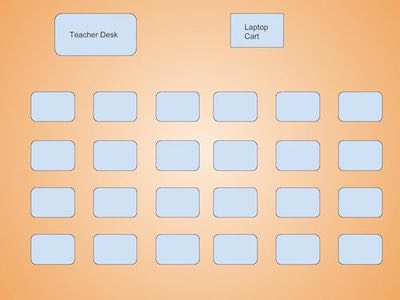
When students sit in groups, it can be difficult for them to follow a lecture or directions.
It’s also uncomfortable for students to sit facing each other, but without saying anything. If we don’t expect students to talk, we actually do them a favor by seating them in rows.
Rows can also be useful for independent activities. In any class, there are times when students need to take a test. Or write a paper. Or read a book.
While I see the value in a range of classroom models, small-group pods are my favorite. Well over half of my lessons have been taught to students in pods. It’s also the most common setup I’ve seen in other teachers’ classrooms.
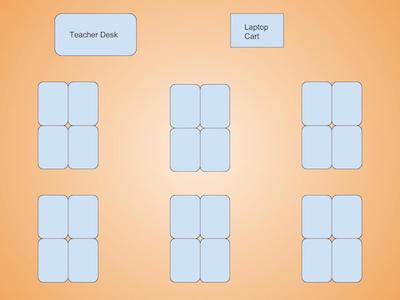
The beauty of pods is that they reinforce a healthy group size. Four students is a perfect size for collaborative learning. Enough students to generate lively discussions. Not so many that anyone gets lost in the crowd.
Pod seating is also pretty flexible. Students can work in pairs even when seated in pods. And I’ve delivered “mini-lessons” by simply asking students to turn their seats to face me.
The more cooperative your students are, the easier it is to use the same configuration for different activities. Using dividers (folders, binders), students can even take tests while sitting in pods.
Round tables offer the perfect shape for class discussions. There’s something powerful about students looking one-another in the eye as they talk.
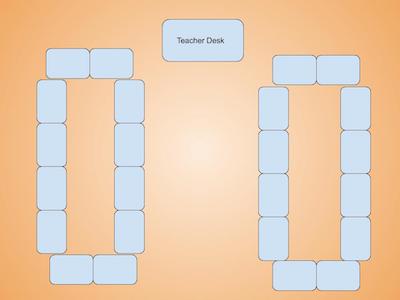
I’ve used several student-led discussion protocols over the years. And they all work a lot better when students face each other.
One of the early pioneers of round tables for student-led discussions was Edward Harkness. In 1930 he donated millions to his Philips Exeter Academy to transform their instructional model. The money was used to reduce class size to 12 students, and to purchase “Harkness Tables.”
As a result, Philips Exeter has become a leader in student-centered and discussion-based instruction. Today, the school and its partners even sell Harkness Tables and provide training on student-led discussions.
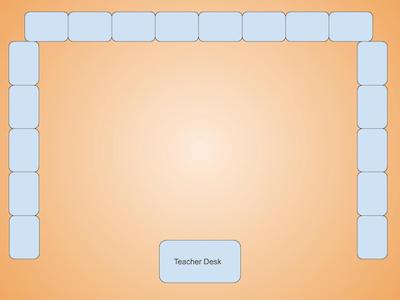
I never had an official Harkness table, but I could get a similar effect by arranging desks in a circle or oval. I always taught more students than a Harkness Table could accommodate anyway. So I would sometimes have two groups hold parallel discussions at separate tables.
The horseshoe arrangement is similar, and works well for whole-group class discussions. Since students still face the teacher, it reinforces a somewhat teacher-led model. The horseshoe can be useful if you are planning to switch between lecture and discussion.
Putting another row of desks inside the horseshoe creates a double-horseshoe” setup. This arrangement can accommodate larger groups, especially in smaller classrooms.
The Fishbowl is a unique arrangement with a very specific purpose. In a fishbowl, a small group of students, “the fish,” sit in the center. The teacher and remaining students sit in an outer ring, facing in.
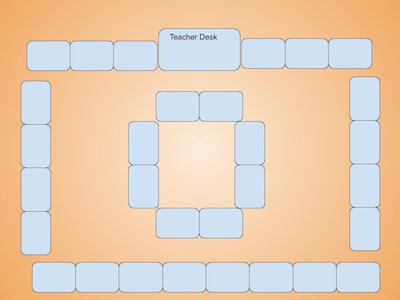
This setup is excellent for modeling collaborative work and group discussions.
The inner group usually researches a topic before the discussion. Before going into the fishbowl, they also review best practices for effective discussion.
Then, on fishbowl day, the inner group conducts their discussion while the observers take notes. Afterwards, the observers provide feedback on the discussion.
Eventually, each group gets their turn “in the fishbowl.” With each round, the whole class improves their communication and collaboration skills.
Reverse seating arrangements are more teacher-centered versions of their counterparts. The difference is that students backs are to the teacher.
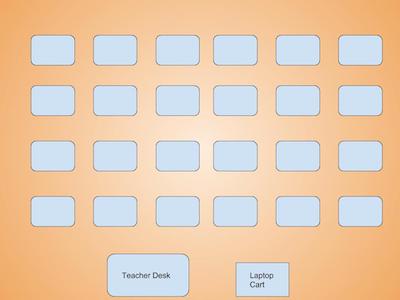
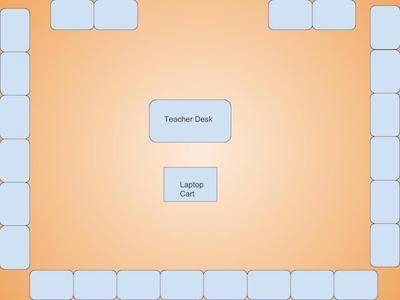
I sometimes recommend reverse rows for teachers nervous about technology in the classroom. Many are concerned that students will get distracted by the internet and not do their work.
By turning students around (or moving the teacher to the back of the room), the teacher can see everyone’s screen. What’s more, the students don’t even know when the teacher is looking.
For the most difficult groups, reverse rows might not be enough. I learned the reverse horseshoe from a teacher I was coaching. He had tried everything to keep his students on task. One day, I came in to find his students around the edge of the room, facing the walls.
I also refer to this as “lock-down” seating. It’s not my favorite arrangement, but sometimes it’s necessary. I recommend it only as a temporary arrangement or as a consequence. Students in lock-down seating should know why they’re there. And they should know the steps they can take to get out.
Flexible seating is the complete opposite of reverse seating arrangements.
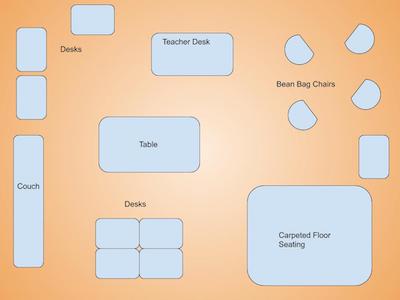
Rather than trying to fight students who won’t stay on-task, flexible seating redefines “on-task.” This set up is perfect for students practicing independent and personalized learning.
Flexible seating isn’t one specific seating arrangement. It describes a decentralized style of classroom design. With flexible seating, students can choose a workplace where they feel comfortable and productive.
If you use this seating arrangement, you should be comfortable with students walking about the room. There may be times where everyone gathers on the carpet for a discussion or morning meeting. But in general, students in flexible classrooms are self-directed.
Such a set up can make it hard to give tests or deliver lectures.
You might be the teacher who has the perfect seating arrangement and wouldn’t change a thing.
But maybe you’ve been thinking about trying something different. You’ve always sat students in rows and you’re starting to feel the limitations. Or maybe you want to use rows, but you’re worried that rows are too strict.
Either way, I hope you’ll feel inspired to try a different arrangement for an upcoming lesson. There’s no one perfect arrangement for every lesson.
The only mistake is settling for a class design that doesn’t support your instructional goals.
As I tried different setups, I enjoyed moving furniture around at the end of the school day. And every time I got new furniture or a new classroom, there were new possibilities to explore.
Eventually, I involved my students in setting up the room. After all, it’s their classroom, too. Their help not only saved time, it made them feel more invested.
Early in the year, I showed my students my favorite arrangements. Then we’d do an icebreaker, where they had two minutes to move the desks into each arrangement.
Not only did they enjoy the activity, but they were learning how to communicate, how to work together, and how to solve a hands-on problem.
Eventually, I would just put the days’ seating arrangement on the board before students arrived. As they got better at working in teams, they continued to shave seconds off their times.
Are you looking for more ways to support student-centered learning in your school? Do you want your students to enjoy their education while developing deeper understanding of concepts? You’ll find more ideas in our weekly Educator’s Newsletter.
You can also join innovative educators from around the world in our Facebook community. We’re dedicated to bringing creativity, collaboration, and conceptual learning to every student, in every classroom.

Jeff Lisciandrello is the founder of Room to Discover and an education consultant specializing in student-centered learning. His 3-Bridges Design for Learning helps schools explore innovative practices within traditional settings. He enjoys helping educators embrace inquiry-based and personalized approaches to instruction. You can connect with him via Twitter @EdTechJeff

Many educators are starting to recognize the problem with homework. And while homework is almost universal, there is little evidence that it actually works.
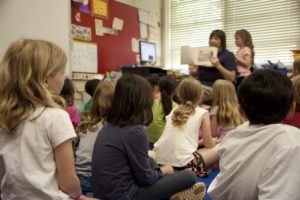
Does the Danielson Rubric improve teaching? Maybe it’s an unfair question. After all, it’s a rubric, not a training program. But…

Looking for a simple way to identify effective teaching? Consider how you (or your team) are performing in each of these three critical domains.